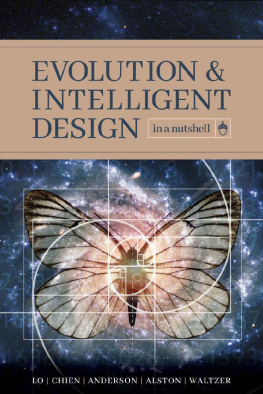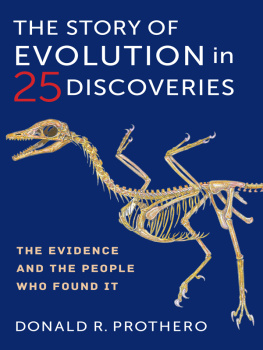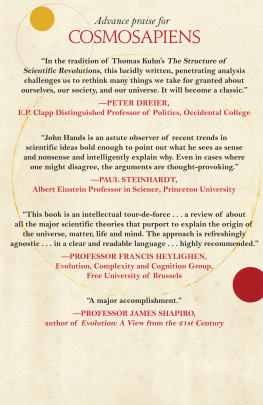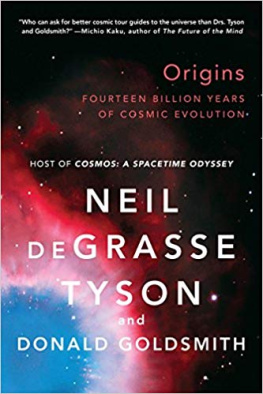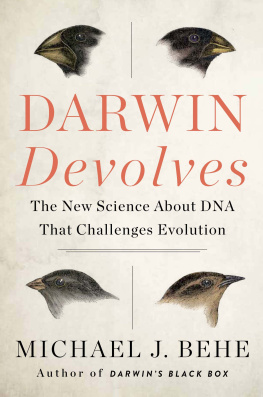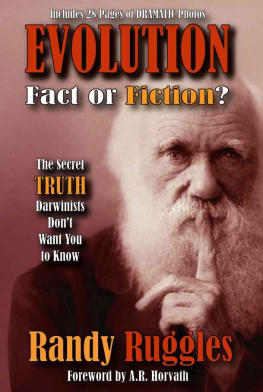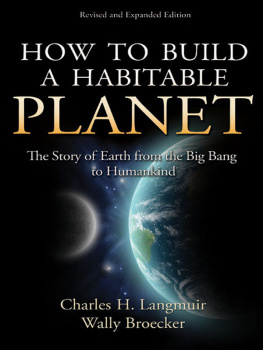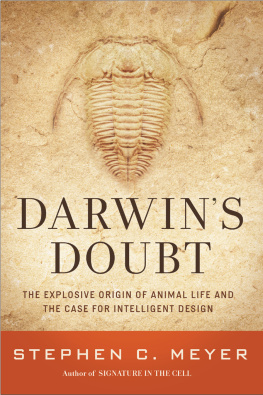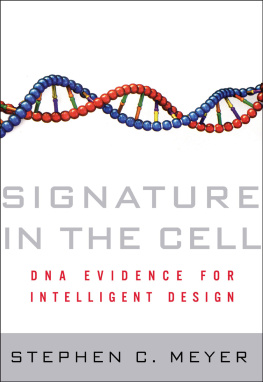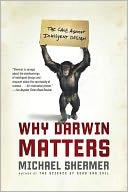EVOLUTION AND
INTELLIGENT DESIGN
IN A NUTSHELL
EVOLUTION AND
INTELLIGENT DESIGN
IN A NUTSHELL
THOMAS Y. LO, PAUL K. CHIEN,
ERIC H. ANDERSON, ROBERT A. ALSTON,
ROBERT P. WALTZER
SEATTLE DISCOVERY INSTITUTE PRESS 2020
Description
Are life and the universe a mindless accidentthe blind outworking of laws governing cosmic, chemical, and biological evolution? Thats the official story many of us were taught somewhere along the way. But what does the science actually say? Drawing on recent discoveries in astronomy, cosmology, chemistry, biology, and paleontology, Evolution and Intelligent Design in a Nutshell shows how the latest scientific evidence suggests a very different story.
Copyright Notice
2020 by the authors. All Rights Reserved.
Library Cataloging Data
Evolution and Intelligent Design in a Nutshell by Thomas Y. Lo, Paul K. Chien, Eric H. Anderson, Robert A. Alston, and Robert P. Waltzer
Library of Congress Control Number: 2020936755
168 pages, 6 x 9 x 0.4 in. & 0.5 lb, 229 x 152 x 9 mm & 237 g
ISBN-13 Paperback: 978-1-936599-81-3, Kindle: 978-1-936599-83-7, EPub: 978-1-936599-82-0
BISAC: SCI015000 SCIENCE / Cosmology
BISAC: SCI008000 SCIENCE / Life Sciences / Biology
BISAC: SCI027000 SCIENCE / Life Sciences / Evolution
BISAC: SCI075000 SCIENCE / Philosophy & Social Aspects
Publisher Information
Discovery Institute Press, 208 Columbia Street, Seattle, WA 98104
Internet: http://www.discoveryinstitutepress.com/
Published in the United States of America on acid-free paper.
First Edition, First Printing, May 2020.
CONTENTS
ACKNOWLEDGMENTS
A T A RECENT SCIENCE SEMINAR, I (T HOMAS Y. L O ) SHARED MY DESIRE to provide an up-to-date, easy-to-read guide to origins science, a book exploring some of the exciting discoveries that are reinvigorating the conversation about how life and the universe came to be. Soon I had help from three of my fellow attendees and another colleague, each an able communicator and each focused on a different part of the origins landscape: electrical engineer Robert Alston, software engineering executive and design theorist Eric Anderson, biology professor Robert Waltzer, and marine biology professor Paul Chien.
My deepest appreciation goes out to each of the four men above. And a special thanks goes to Eric, co-editor and contributing author, and to co-editor Jonathan Witt, whose energy and experience guided the project to completion. We also are grateful to Brian Gage for the cover design, and to Mike Perry for the layout and indexing.
Numerous hours and drafts and revisions go into producing any book, and our thanks also go out to the many colleagues, content reviewers, and proofreaders who have remained anonymous. Any mistakes that remain are our own.
Our thanks also go out to our families for their support during this undertaking and to you, the reader, for your willingness to embark with us on this journey of discovery.
INTRODUCTION
Thomas Y. Lo
W HERE DID WE COME FROM? H OW DID LIFE EMERGE IN THE FIRST place? Was there a beginning of the universe? How did it come to be? I long wrestled with these sorts of questions. But even as I was falling in love with modern science, I remained unaware of some recent scientific discoveries that cast fresh light on these ancient mysteries.
I was born in Nanjing, China, the third of four children. When I was two years old our family moved to Taipei, Taiwan, where I spent my childhood and early teenage years. My mother was a homemaker who later studied accounting and worked in a private all-girls high school to help with the family income. My father was a strict military officer who brought his workplace standards of discipline and rigor into the home. Family life was stressful and we dared not disobey or disappoint my father. When I was about ten years old, my family embraced Christianity, bringing with it a softening of my fathers approach and a positive change in our family environment. This was a good time for our family.
At the age of twelve, I attended a church retreat. There were more than one hundred people in attendance, ranging in age from 11 to 82, including college students, young professionals, and retirees. In the last evening of the week-long program, the entire congregation underwent an unforgettable spiritual experience. As a result, I eventually decided to be baptized. However, even though I felt I had experienced a genuine spiritual experience in my own life, perhaps even a small miracle, I remained skeptical of the miracles in the Bible. They seemed too big, too grand, too different from the experiences of my own life. Could they really be true? If the events related in the Old Testament and the New Testament werent based on objective scientific evidence, how could they be credible?
As I went through my teenage years, the doubts only grew stronger with time. Classmates teased me about my faith. Teachers made condescending remarks about Christianity. I found it all very uncomfortable and irritating.
After I started college, this growing internal tension drove me away from my Christian faith. Externally I was still going through the motions, but internally I was not committed. I was living at home at the time, still having to go to church with my family and attend Christian fellowship groups on campus. It was tearing me apart emotionally. There was no joy in my life.
At the same time, I became deeply troubled by the big questions: What is the meaning of life? Why am I here? What am I supposed to do with my life? I immersed myself in the literatures of existentialism and Buddhism. Without finding any satisfactory answers, I sometimes felt frustrated and depressed. My quest for meaning and purpose didnt end, but I began to look for answers outside of the spiritual and religious realm. It didnt take long before I found the answers I was searching for.
Or at least I thought I had.
When I took modern physics in my third year of college, my professor described how electrons, protons, and neutrons behave in an atom. I immediately fell in love with it. The resemblance between the numerous galaxies revolving in the enormity of space and the simple model my professor shared of the infinitesimal elementary particles orbiting in an atom captivated me.
Having found my passion in science and engineering, I set aside the big questions. My study of astronomy, geology, genetics, and the history of science in my later years, however, eventually led me back to them.
Yes, science led me back to the big questions, and I was in good company. About thirty-five years before my physics class, Albert Einstein found himself struggling to hold onto his belief in a static and eternal universe, one that was not created but had always existed. However, he felt compelled to revise his views after learning about several lines of new evidence, including the Doppler-like redshift of distant galaxies discovered by Edwin Hubble and other astronomers.
In January 1931, Hubble invited Einstein to visit Californias Mt. Wilson Observatory to view Hubbles work on the redshift phenomenon. Perhaps the most famous photograph of the event shows Einstein peering through the eyepiece of the massive 100-inch Hooker Telescope, then the worlds largest. This now-famous scene of Einstein gazing up at the distant heavens while Hubble stands immediately behind him, a solemn look on his face and pipe in hand, was more of a media photo op than an actual scientific observation, but the image has come to represent both the reality of the expanding universe, and Einsteins willingness to embrace the evidence and follow it wherever it leads, even when it challenged his prior views.
Next page
